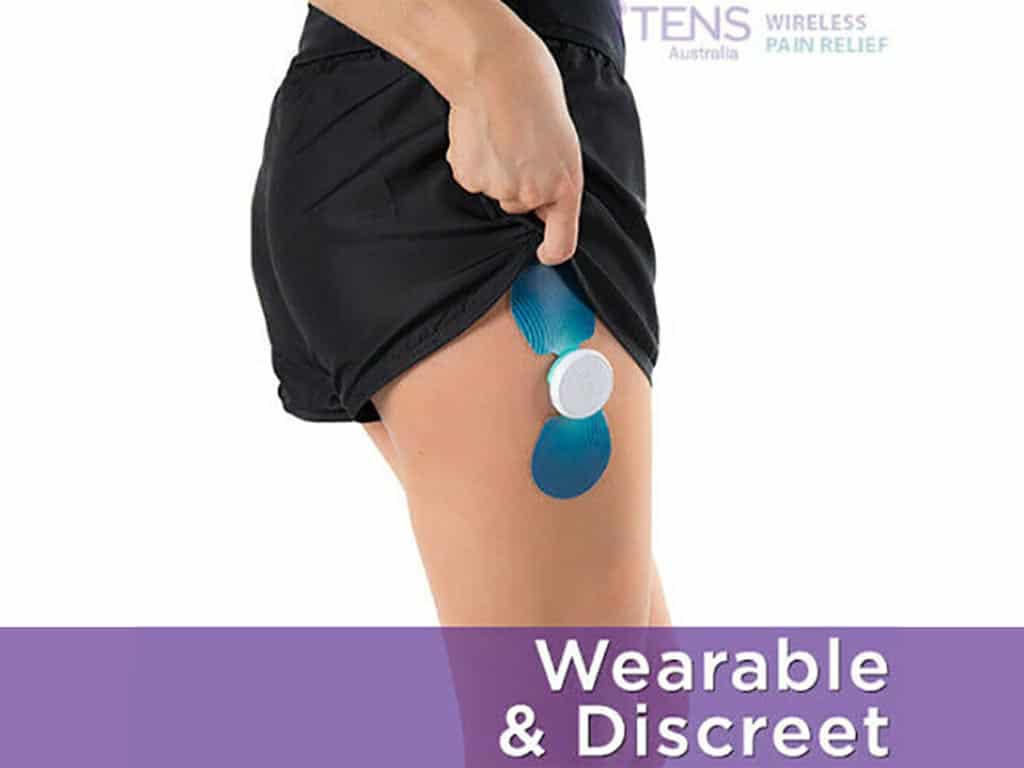
A Transcutaneous Electrical Nerve Stimulation or TENS machine for pain control is an electronic device that delivers electrical currents as a method of pain relief. Accordingly, this electrical stimulation can block the transmission of pain messages, prompt the release of endorphins, and enhance blood flow. With such mechanisms, TENS therapy can treat different types of pain. It can manage both acute pain and chronic pain. Additionally, TENS can address neuropathic pain and musculoskeletal pain.
Living with pain can be debilitating. Whether it is from health issues or injury, it can impact the quality of life. Hence, finding a pain management solution is essential. Traditionally, people use medications or undergo physical therapy. However, technological advancements have led to the development of TENS. It is commonly recommended by physical therapists and medical professionals. This article will present how a TENS electrical device for pain control works, its benefits, and the types of pain it can treat.
How a TENS Machine for Pain Control Works
Generally, a TENS machine for pain control works by sending electrical impulses to the body via electrode pads placed on the skin. This form of pain relief operates through various analgesic effects. Foremost, TENS therapy stimulates the release of endorphins. These are the natural painkillers of the body. Endorphins act as neurotransmitters and bind to opioid receptors in the brain and spinal cord. Therefore, it promotes a sense of well-being.
Secondly, the electrical pulses from TENS engage the pain gate mechanism. According to this, the nervous system can only process a limited amount of sensory information at a time. When the TENS unit stimulates the nerves, it can compete with the pain messages and can effectively “close the gate”. This inhibits the transmission of pain signals to the brain. As a result, it reduces the perception of discomfort.
In addition, the electrical currents from TENS can influence blood flow in the treatment region. This activity can deliver essential nutrients and oxygen to the body tissues. Nevertheless, this modulation of blood circulation can help to reduce inflammation and promote healing. This contributes to the overall level of pain relief and recovery.
Frequencies and Intensities
The frequencies and intensities of the electrical pulses play a crucial role in TENS therapy.
- Frequencies: This refers to the number of electrical pulses delivered by the device per second. It is measured in Hertz (Hz). Accordingly, this is categorised as High-Frequency (HF) and Low-Frequency (LF). HF is beneficial for acute conditions, while LF is valuable for managing chronic conditions.
- Intensities: This refers to the strength of the electrical pulses. It is measured in Milliamperes (mA). The intensities can be set to a level that is comfortable for the individual. Hence, this offers a method of pain relief without causing discomfort.

Benefits of Using a TENS Machine for Pain Control
The TENS machine for pain control offers numerous benefits to users. Firstly, TENS therapy provides targeted relief. This allows for localised treatment, addressing specific points without affecting the entire body. Secondly, TENS treatment is non-invasive and drug-free. It does not require injections, surgical procedures, and pharmaceutical substances. Thus, it eliminates the potential adverse effects of these activities.
Thirdly, TENS units are versatile. It can be used to address a wide range of conditions. Fourthly, TENS machines offer customisation options. This allows users to adjust the pulse rate, pulse duration, and the intensity of stimulation. Furthermore, TENS therapy is cost-effective. It eliminates the ongoing expenses associated with prescription medications, invasive medical procedures, or frequent visits to healthcare providers.
Moreover, TENS can be used as an adjunct treatment. Hence, it can complement other therapeutic interventions like physical therapy and exercise. This multi-modal approach enhances the overall pain management strategy, leading to positive outcomes. Additionally, TENS units are portable and compact. This allows individuals to use them at home, work, or on the go.
Are There Potential Side Effects?
While TENS is safe, there are minimal potential side effects. Some individuals may experience skin irritation at the electrode placement sites. Proper skin preparation and regularly checking the skin can help minimise this risk. In some cases, the electrical stimulation may cause involuntary muscle twitching. This can be uncomfortable and may indicate the need to adjust the stimulation parameters.
Some individuals may also have allergic reactions to the adhesive used on the electrodes. Using hypoallergenic electrodes can help mitigate this risk. Additionally, the improper use of the TENS, such as setting the intensity too high or applying the electrode patches incorrectly, can lead to discomfort.

Types of Pain that Can be Treated with a TENS Machine for Pain Control
The TENS machine for pain control is an effective modality for targeting a variety of pain conditions. Foremost, TENS therapy can address acute pain conditions. This may result from primary dysmenorrhea, tension headaches, and sports injuries. Secondly, individuals suffering from a chronic pain condition can benefit from TENS. This may include arthritis pain, fibromyalgia, neck, and backaches.
Thirdly, TENS treatment can manage neuropathic pain. It arises due to the damage or dysfunction of the nervous system. This may include diabetic neuropathy, trigeminal neuralgia, and postherpetic neuralgia. Fourthly, TENS is effective in aiding musculoskeletal pain. This affects the muscles, bones, and tendons. It may involve conditions like osteoarthritis pain, knee joint pain, and rheumatoid arthritis.
Furthermore, TENS machines can target muscular discomfort. This may be due to overexertion, tension, or muscle spasms. The electrical stimulation from TENS can help relax muscles, reduce muscle soreness, and alleviate discomfort. Overall, the versatility of TENS therapy in addressing these various types of ailments makes it a valuable treatment option for individuals.
When to See a Doctor?
If an individual experiences new or worsening discomfort while using a TENS unit, it is essential to consult a health professional. This may indicate an underlying issue that needs to be addressed. If persistent or severe skin irritation develops despite proper skin preparation and electrode maintenance, consulting a doctor is advisable. This can help identify potential allergic reactions or other skin-related concerns.
Additionally, any unexpected adverse reactions, such as dizziness, headaches, or unusual sensations, should prompt a visit to a healthcare professional. These reactions may signal an inappropriate response to TENS therapy and require further evaluation.
Conclusion
In conclusion, a TENS machine for pain control is a valuable tool for individuals. It is a device that delivers electrical currents to the body to alleviate discomfort. It sends the electrical pulses through electrode patches placed on the skin. Subsequently, this electrical stimulation works in various ways. Foremost, it interrupts the transmission of pain signals. Additionally, it stimulates the release of endorphins and improves blood flow. The pulses can also stream in different frequencies and intensities.
Furthermore, TENS therapy offers numerous benefits. It is non-invasive, drug-free, versatile, customisable, cost-effective, and portable. Also, it provides targeted relief and can complement other treatment solutions. With such mechanisms and benefits, TENS can treat various conditions. This may include headaches, backaches, trigeminal neuralgia, osteoarthritis, and muscle spasms. However, it is crucial to know the potential side effects of TENS and the signs when to see a doctor.




















